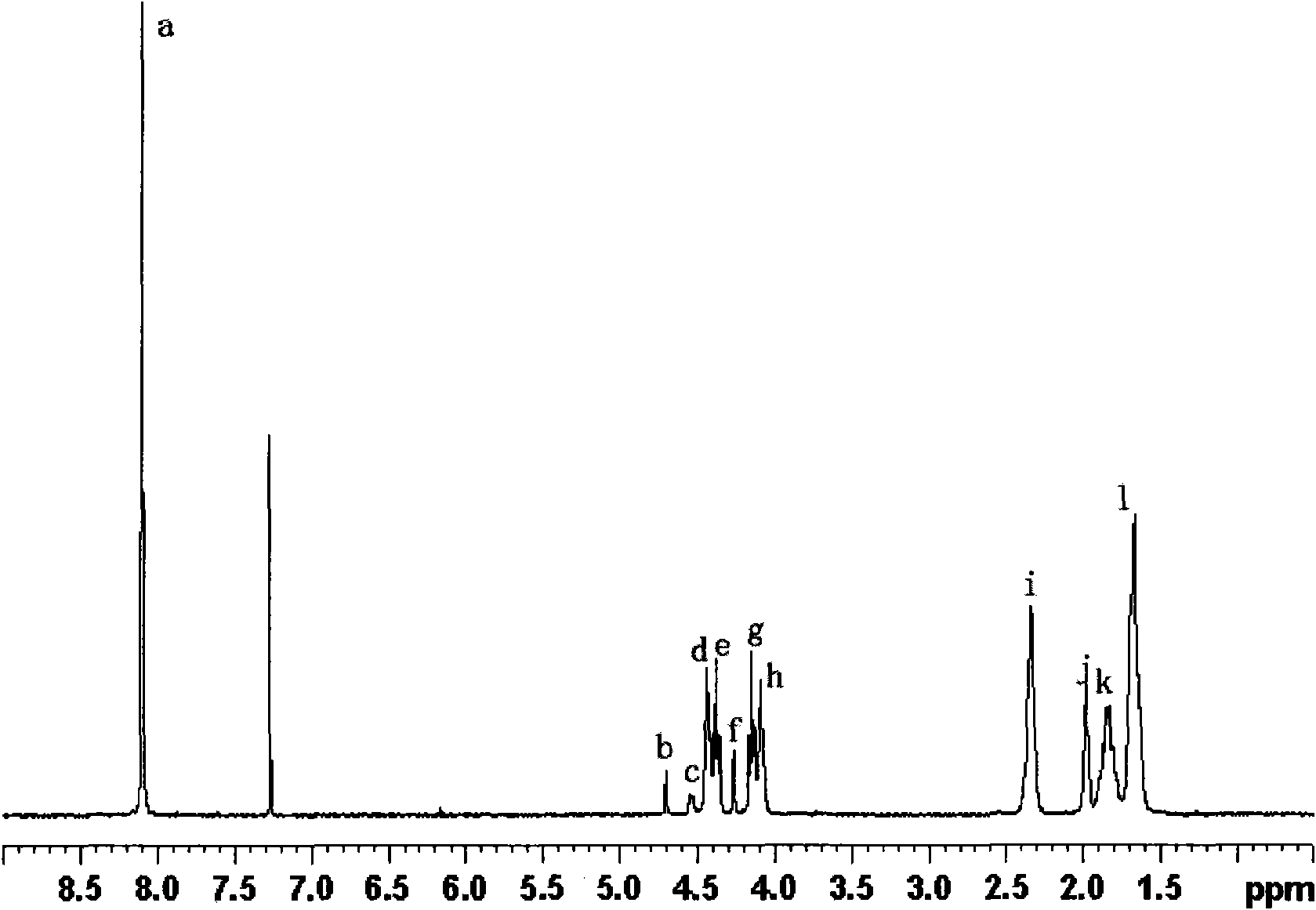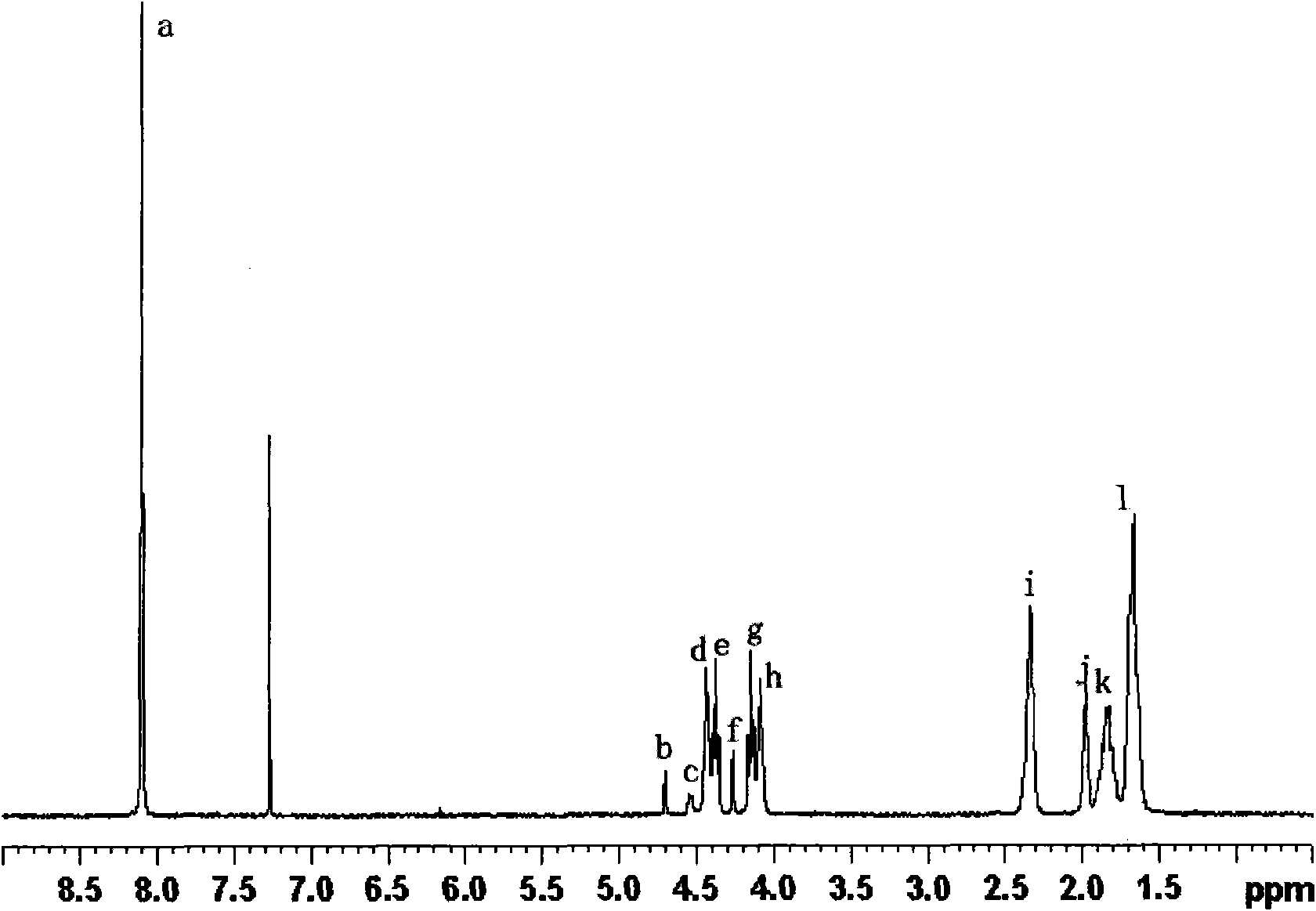Biodegradable copolyester and preparation method thereof
A biodegradable and copolyester technology is applied in the field of aliphatic/aromatic copolyester and its preparation, which can solve the problems of poor biodegradability of aromatic polyesters and the use of non-degradable materials, and achieves low esterification reaction temperature and high synthesis efficiency. The effect of shortening the reaction time and increasing the reaction speed
- Summary
- Abstract
- Description
- Claims
- Application Information
AI Technical Summary
Problems solved by technology
Method used
Image
Examples
Embodiment 1
[0023] Add 820g of purified terephthalic acid (PTA), 180g of adipic acid (AA), 525g of 1,4-butanediol (1,4- BD) and 40g ethylene glycol (EG), 0.2g tetrabutyl titanate (equivalent to 200ppm of the total weight of PTA and AA), 0.6g antimony acetate (equivalent to 600ppm of the total weight of PTA and AA). Maintain normal pressure in the kettle and stir at a constant speed. When the temperature in the reaction kettle rises to 150°C, water will start to come out. Continue to raise the temperature and control the inner temperature of the reaction kettle to not exceed 220°C. When the amount of water is produced, the esterification reaction ends. Continue to add 0.05g trimethyl phosphate (50ppm equivalent to the total weight of PTA and AA) in the kettle, vacuumize, make the pressure in the polymerization kettle be reduced to below 150Pa in 60 minutes, react under this pressure for 85 minutes, react The final temperature is controlled at 280°C, and then the reaction system is returne...
Embodiment 2
[0025] In a 5L stainless steel reaction kettle equipped with nitrogen inlet, condensate outlet and stirrer, 630g of purified terephthalic acid (PTA), 370g of adipic acid (AA), 549g of 1,4-butanediol (1,4- BD) and 94g ethylene glycol (EG), 0.2g tetrapropyl titanate or tetraisopropyl titanate (equivalent to 200ppm of the total weight of PTA and AA) and 0.3g antimony trioxide (equivalent to the total weight of PTA and AA 300ppm by weight). Maintain normal pressure in the kettle and stir at a constant speed. When the temperature in the reaction kettle rises to 150°C, water will start to come out. Continue to raise the temperature and control the inner temperature of the reaction kettle to not exceed 220°C. When the amount of water is produced, the esterification reaction ends. Continue to add 0.3g tetrapropyl titanate (equivalent to 300ppm of the total weight of PTA and AA), 0.1g antimony trioxide (equivalent to 100ppm of the total weight of PTA and AA) and 0.15g triethyl phospha...
Embodiment 3
[0027]In a 5L stainless steel reaction kettle equipped with nitrogen inlet, condensate outlet and stirrer, add 333g of purified terephthalic acid (PTA), 468g of adipic acid (AA), 322g of 1,4-butanediol (1,4- BD) and 40 g of ethylene glycol (EG), 0.3 g of tetramethyl titanate (corresponding to 300 ppm of the total weight of PTA and AA) and 0.3 g of antimony ethylene glycol (corresponding to 300 ppm of the total weight of PTA and AA). Maintain normal pressure in the kettle and stir at a constant speed. When the temperature in the reaction kettle rises to 150°C, water will start to come out. Continue to raise the temperature and control the inner temperature of the reaction kettle to not exceed 220°C. When the amount of water is produced, the esterification reaction ends. Continue to add 0.5g tetramethyl titanate (equivalent to 500ppm of the total weight of PTA and AA) and 0.2g triphenyl phosphate or triphenyl phosphite (equivalent to 200ppm of the total weight of PTA and AA) in ...
PUM
| Property | Measurement | Unit |
|---|---|---|
| melting point | aaaaa | aaaaa |
| melting point | aaaaa | aaaaa |
| melting point | aaaaa | aaaaa |
Abstract
Description
Claims
Application Information
 Login to View More
Login to View More - R&D
- Intellectual Property
- Life Sciences
- Materials
- Tech Scout
- Unparalleled Data Quality
- Higher Quality Content
- 60% Fewer Hallucinations
Browse by: Latest US Patents, China's latest patents, Technical Efficacy Thesaurus, Application Domain, Technology Topic, Popular Technical Reports.
© 2025 PatSnap. All rights reserved.Legal|Privacy policy|Modern Slavery Act Transparency Statement|Sitemap|About US| Contact US: help@patsnap.com



